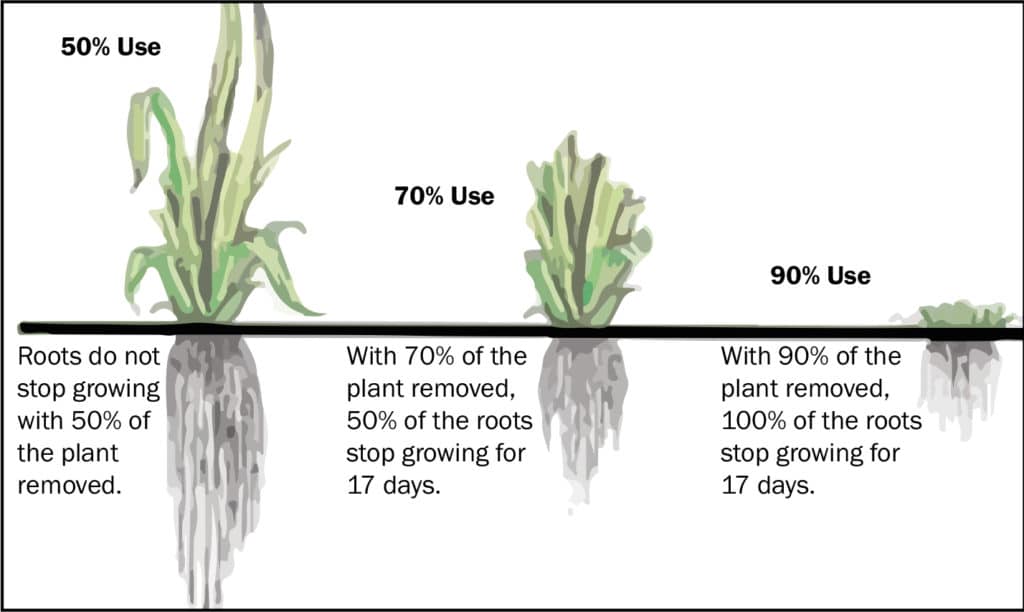How To Promote Grass Root Growth

Phosphorus and potassium are the two main nutrients that support root growth in plants.
How to promote grass root growth. Cool season grasses grow roots in the fall and until the ground freezes. For most grasses deeper less-frequent irrigation stimulates deep root growth. The simplest way to encourage root growth after you start a deep infrequent watering schedule is to regularly apply a Root Growth Stimulant product to the lawn throughout the growing season.
For most grasses watering deeper but less frequently is the number one way of stimulating deeper grass root growth. So if youre hoping to achieve a vigorous root system in your yard you need to irrigate the grass for longer periods and leave more time between watering sessions. Source This leaves the turf vulnerable for a short period of time as it has to regrow its entire root.
Turf does this too in its own way. This grass can grow roots over 2 deep which is among the deepest roots for cool-season turfgrasses. By putting the food and water deep you will force the roots to go after them.
After 2 to 3 weeks if you have been watering properly the sod should have a well-established root system. Seasonal root growth of turfgrasses. These deeper soil depths will remain moist long after the surface has dried.
This larger root mass can then support more grass blades on top. The roots depend on carbohydrate production via photosynthesis in the leaves for their growth. So deep water twice a week after the aeration and fert.
A strong root system produces a healthy thick weed free lawn. This is my lawn e5. After watering the soil should be moist at 4 to 6 inches below the surface.

Turf does this too in its own way.
How to promote grass root growth. Mowing turf grasses improves the appearance of lawns but mowing is also a destructive activity that reduces the leaf area needed to support root development. For most grasses deeper less-frequent irrigation stimulates deep root growth. If you keep cutting it down in response it will grow wider and deeper to compensate with more roots.
The roots depend on carbohydrate production via photosynthesis in the leaves for their growth. 5 Providing storage for carbohydrates produced in the shoots. This is my lawn e5.
For most grasses watering deeper but less frequently is the number one way of stimulating deeper grass root growth. These deeper soil depths will remain moist long after the surface has dried. So if youre hoping to achieve a vigorous root system in your yard you need to irrigate the grass for longer periods and leave more time between watering sessions.
Source This leaves the turf vulnerable for a short period of time as it has to regrow its entire root. When you gently tug on the grass it shouldnt pull up from the soil. So deep water twice a week after the aeration and fert.
Cool season grasses grow roots in the fall and until the ground freezes. Shallow frequent irrigation on the other hand generally results in shallower root growth. Drought will hurt roots also.
However the roots of perennial ryegrass behave as an annual and they die back each spring. DIY how to manage shallow grass roots. A program of weed and feed in spring and feeding in fall is beneficial for your lawn.

If you keep cutting it down in response it will grow wider and deeper to compensate with more roots.
How to promote grass root growth. The roots depend on carbohydrate production via photosynthesis in the leaves for their growth. For most grasses watering deeper but less frequently is the number one way of stimulating deeper grass root growth. Cool season grasses grow roots in the fall and until the ground freezes.
This larger root mass can then support more grass blades on top. Specifically they encourage plants to put down a dense collection of. After 2 weeks start watering every other day for a longer period of time to encourage deeper root growth.
After harvest and transplanting turf existing roots take up moisture to keep the grass alive but will not grow into the soil bed. 5 Providing storage for carbohydrates produced in the shoots. A strong root system produces a healthy thick weed free lawn.
Roots are where important carbohydrates are stored. This grass can grow roots over 2 deep which is among the deepest roots for cool-season turfgrasses. Drought will hurt roots also.
So deep water twice a week after the aeration and fert. Source This leaves the turf vulnerable for a short period of time as it has to regrow its entire root. Seasonal root growth of turfgrasses.
If you never stress your muscles they dont have to grow thick to live but when you stress them or tear them down they rebuild stronger. So if youre hoping to achieve a vigorous root system in your yard you need to irrigate the grass for longer periods and leave more time between watering sessions. New root development depends on sufficient moisture in the soil and all roots after transplant come from new growth out of stolons rhizomes and plant crowns.









